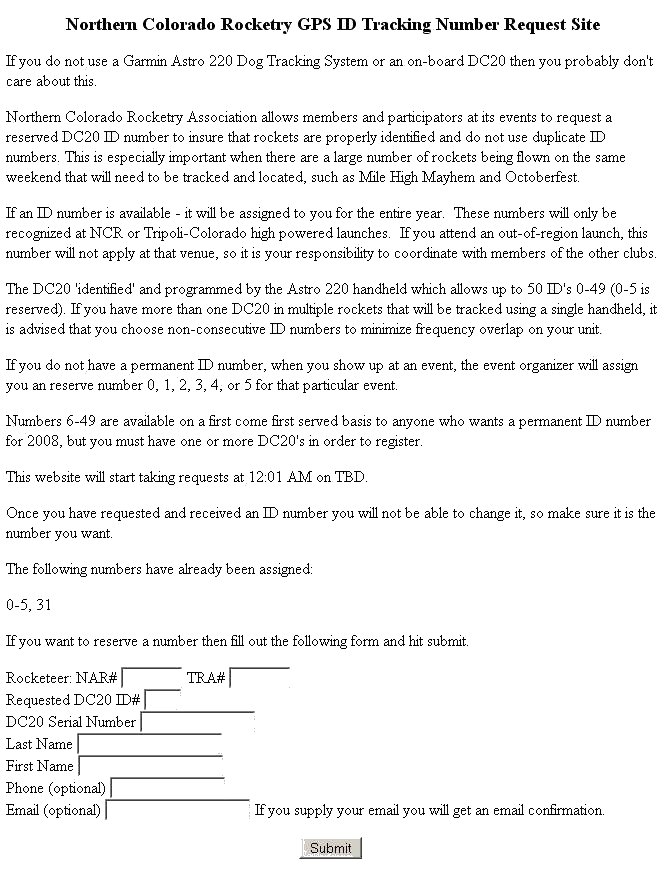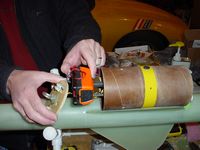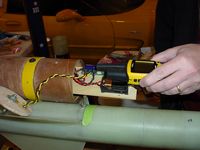Forums › Archives › Archive – News & Events › MHM Transmitter Coordination
- This topic has 32 replies, 9 voices, and was last updated 17 years, 6 months ago by
 Adrian.
Adrian.
-
AuthorPosts
-
April 9, 2008 at 7:53 pm #47288
slipstick
Warren and Eric, I think it would be a good idea to write some html to have an online pre- registration of ID numbers before folks show up to a site with conflicting ID (like the factory default setting). We use a similar system for car number in autcrossing. Here’s a screen dump of what I am suggesting. Its a PHP file.
Source code: http://telerover.com/rockets/GPS/Request_DC20_ID_Number.php

This is as far as I can go with it.
April 9, 2008 at 9:12 pm #47289 Warren B. MusselmanModerator
Warren B. MusselmanModeratorThank you Mike. Very much appreciated. I’ve got to coordinate with Jeremiah as the development website is now running on a virtual machine on his laptop and he’s got a large code dump we’re almost ready to roll out. We can likely add this to that, but I don’t want to stick it in the current live site unless I coordinate with him first. I’ll post here as soon as I have some communication with him.
Warren
April 10, 2008 at 7:29 am #47290Conway Stevens
ParticipantHow about a TEST IT WITH ALL YOU ELECTRONICS!!! May have to be separated from main electronics and they to may also need to be shielded. Just a suggestion and reminder.
April 10, 2008 at 1:05 pm #47291 Warren B. MusselmanModerator
Warren B. MusselmanModeratorI would expect separation to be an absolute requirement after Mike’s experience with his other transmitter rig although that was operating at significantly higher power than I expect the collars to transmit with.
Warren
April 10, 2008 at 2:01 pm #47292new2hpr
ParticipantThe DC20 transmits at 2W power. The low end Rinos are .5W and the higher end Rinos can do 5W on GMRS.
BTW, 1/4 wavelength sensitivities are around the 6″ range for FRS/GMRS, so ebay wiring is right in the ballpark for good (or bad 😕 ) reception and interference.
Ken
April 10, 2008 at 2:14 pm #47293Conway Stevens
ParticipantMost of these units as they were designed for ground use have a lot larger output of 2 to 5 watts.. With the exception of some that are .5
with that much output its no wonder they have some issues with interferance.
April 10, 2008 at 10:27 pm #47294slipstick
We should have a separate GUIDELINES FOR RF along with ID allocation, but could be mentioned on a future ID RESERVE page. I’d be glad to help the web dudes on writing the html for those, if necessary.
Ken and I got together over lunch today to test his Rhino 110 (.5W) and my DC20 (5W) with his PerfectFlight MAWD. The Rhino was able to set a false launch (220 feet) with the PF, but the Rhino antenna had to be right on top of the altimeter. The DC20 however did not affect it. The wiring in his avbay was 6-8″ long which (as he mentioned previously) and was tuned to the 1/4 wavelength of the FRS radio (about 400 Mhz). The 1/4 wavelength for a DC20 is about 18″. We added a charge wire of 18″ to his avbay but still could not get the PF to fire prematurely with the DC20.
DC20 on Left, Rhino 110 on right:


When the Rhino was tested with my MW RRC2-mini there was no false launch, however my DC20 again set it off, when the antenna was close by.
In all my tests, as a summary, if the TX is at least 6″ away there are no problems, or if the avbay is shielded, but to be safe a 24″ separation is recomended.
So far tests have been done with:
MW RRC2-X
MW RRC2-mini
MW PET2
PF Alt15K
PF MAWD
Adept
RCMSI suspect that cell phones could affect systems with short wires. To be tested… 🙄
April 10, 2008 at 10:58 pm #47295slipstick
Most of these units as they were designed for ground use have a lot larger output of 2 to 5 watts.. With the exception of some that are .5
with that much output its no wonder they have some issues with interferance.The power is not the primary problem, as .5W coupled into a 9V circuit could supposedly generate .055 amps into the Baro circuitry creating a voltage spike which reaches the threshhold of what is considered a launch. The PF is set at 200 feet, MW is set at 300. If one could change the launch threshhold higher there is less risk involved. The more finely divided A to D increments would have more of an issue as well (say a 45K altimeter vs a 15K altimeter) as the threshold is reached sooner with less voltage.
Predominately, Its the wiring going to the units, that act as antennas, that are the problem, transferring the energy to the altimeters, which must be detuned for any particular radio transmitter. The circuitry designs that uses ground planes are less susceptable to couple currents coming in from the wiring.
I have not seen an instance in my tests where a radio could affect a neighbors rocket, its only within the same rocket that the issue must be addressed (accept for ID management issues).
April 10, 2008 at 11:15 pm #47296 Warren B. MusselmanModerator
Warren B. MusselmanModeratorI wonder if using shielded or twisted pair wiring would resolve some or all of the RF coupling issue? One problem I note with most altimeters is that except for the power supply negative terminal, there’s not much in the way of a ground to tie to. A common ground for things might also help.
Of course, in most cases you would put your transmitter up in the nose and the ebay down below the parachute bay. On some rockets the idea of 24″ separation might be an issue, but considering that the DC20 is fairly sizable and would mostly fly in sizable rockets (excluding the circumstance of stripping one to bare essence to fly in a 38mm or 54mm bird), it shouldn’t be an issue – at least in dual deploy birds.
Warren
April 11, 2008 at 3:07 am #47297mule
ParticipantSo, would it be better to use the Astro 220 DC20 combo or a 70cm tx/rx system?
I am getting an Astro setup as well, but am not sure what to use in my VA. I have an old dog that I need it for when we go camping, the rocket would make the $450 price tag a bit easier to stomach…..PS, I still have a 2×4 dry erase board and easel that I will donate to the club if someone wants to get it from me. I will be at MHM, but whoever is doing setup might like to have it in advance.
-
AuthorPosts
- You must be logged in to reply to this topic.




